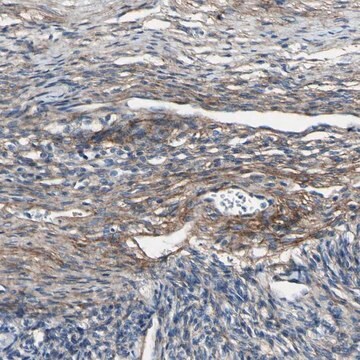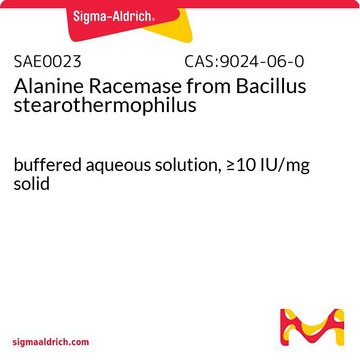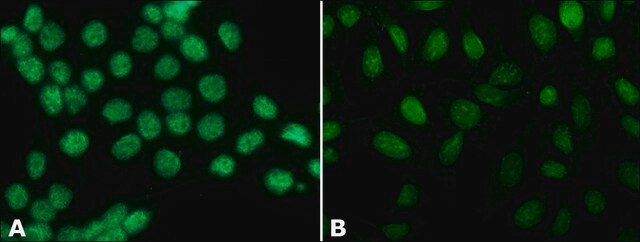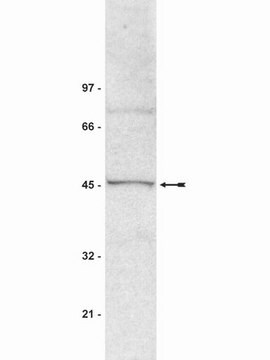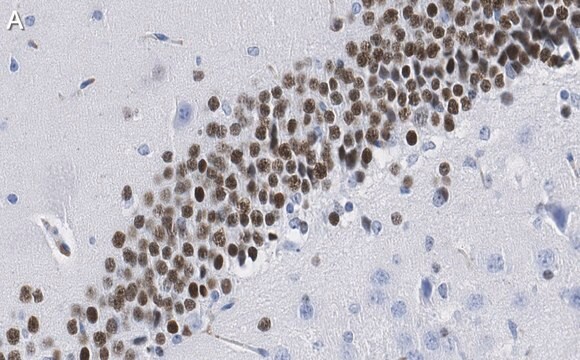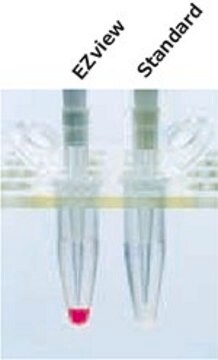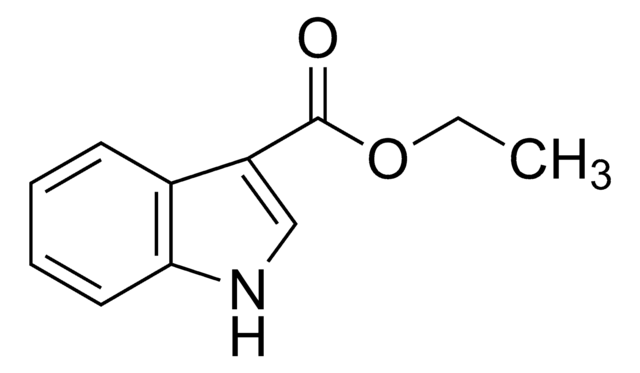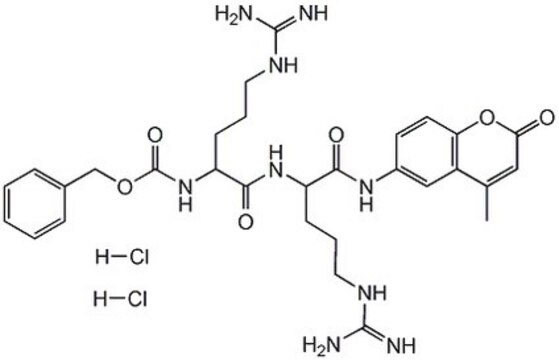S8316
Anti-SUV39H1 Histone Methyltransferase antibody
mouse monoclonal, 44.1
About This Item
Produits recommandés
Nom du produit
Monoclonal Anti-SUV39H1 Histone Methyltransferase antibody produced in mouse, ~2 mg/mL, clone 44.1, purified immunoglobulin, buffered aqueous solution
Source biologique
mouse
Niveau de qualité
Conjugué
unconjugated
Forme d'anticorps
purified immunoglobulin
Type de produit anticorps
primary antibodies
Clone
44.1, monoclonal
Forme
buffered aqueous solution
Espèces réactives
mouse, human
Concentration
~2 mg/mL
Technique(s)
immunocytochemistry: suitable
immunoprecipitation (IP): suitable
indirect ELISA: suitable
microarray: suitable
western blot: 2-4 μg/mL using extract of HeLa nuclear cells
Isotype
IgG1
Numéro d'accès UniProt
Conditions d'expédition
dry ice
Température de stockage
−20°C
Modification post-traductionnelle de la cible
unmodified
Informations sur le gène
human ... SUV39H1(6839)
mouse ... Suv39h1(20937)
Description générale
Spécificité
Immunogène
Application
Western Blotting (1 paper)
For immunoblotting, a working concentration of 2-4 mg/mL is recommended using an extract of HeLa nuclear cells.
Actions biochimiques/physiologiques
The overall identity between the human and mouse SUV39H1 amino acid sequences is 95%, both lacking an N-terminal 155 amino acid stretch from Drosophila Su(var)3-9. As a consequence, cross-species amino acid identity reaches 42% between the fly and the two mammalian proteins. The SUV39H1 protein consists of three regions: a SET domain, a 110 amino acid domain containing several cysteine conserved residues, and a chromo domain.
Forme physique
Clause de non-responsabilité
Vous ne trouvez pas le bon produit ?
Essayez notre Outil de sélection de produits.
Code de la classe de stockage
10 - Combustible liquids
Classe de danger pour l'eau (WGK)
WGK 3
Point d'éclair (°F)
Not applicable
Point d'éclair (°C)
Not applicable
Faites votre choix parmi les versions les plus récentes :
Certificats d'analyse (COA)
Vous ne trouvez pas la bonne version ?
Si vous avez besoin d'une version particulière, vous pouvez rechercher un certificat spécifique par le numéro de lot.
Déjà en possession de ce produit ?
Retrouvez la documentation relative aux produits que vous avez récemment achetés dans la Bibliothèque de documents.
Notre équipe de scientifiques dispose d'une expérience dans tous les secteurs de la recherche, notamment en sciences de la vie, science des matériaux, synthèse chimique, chromatographie, analyse et dans de nombreux autres domaines..
Contacter notre Service technique